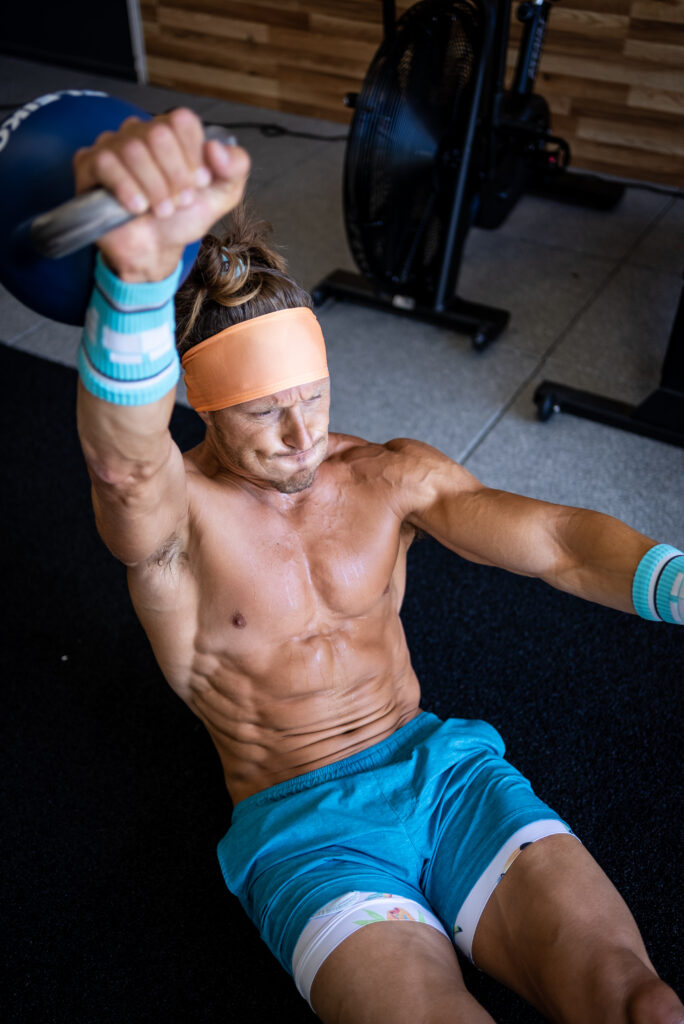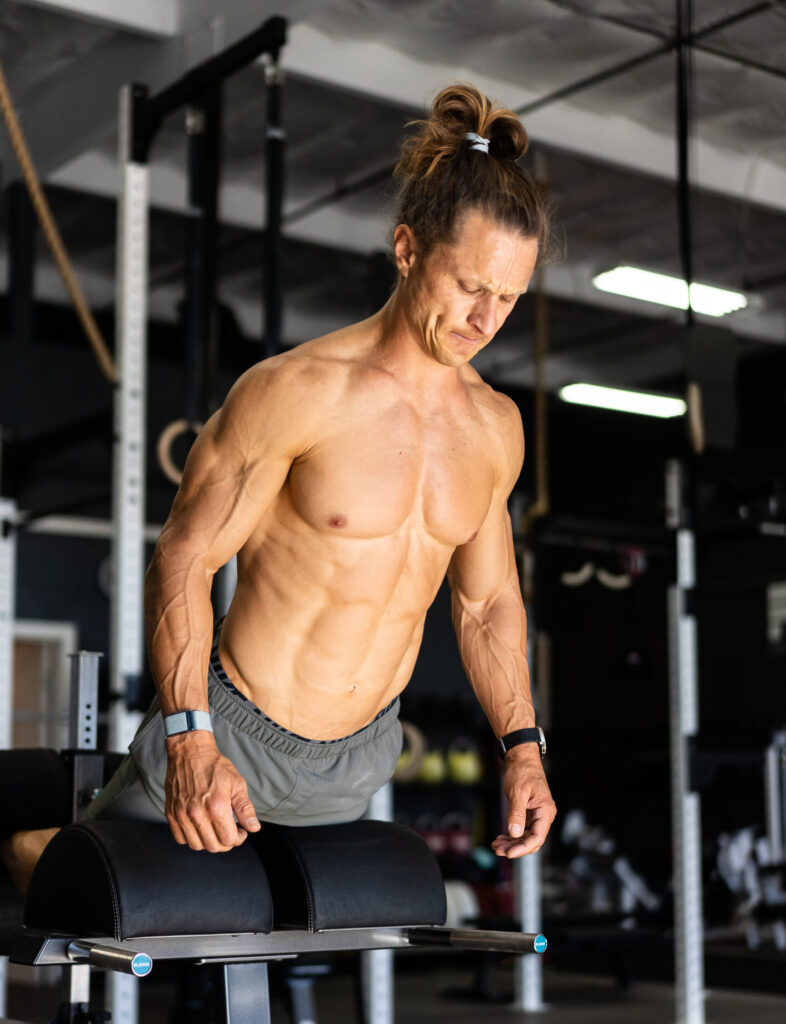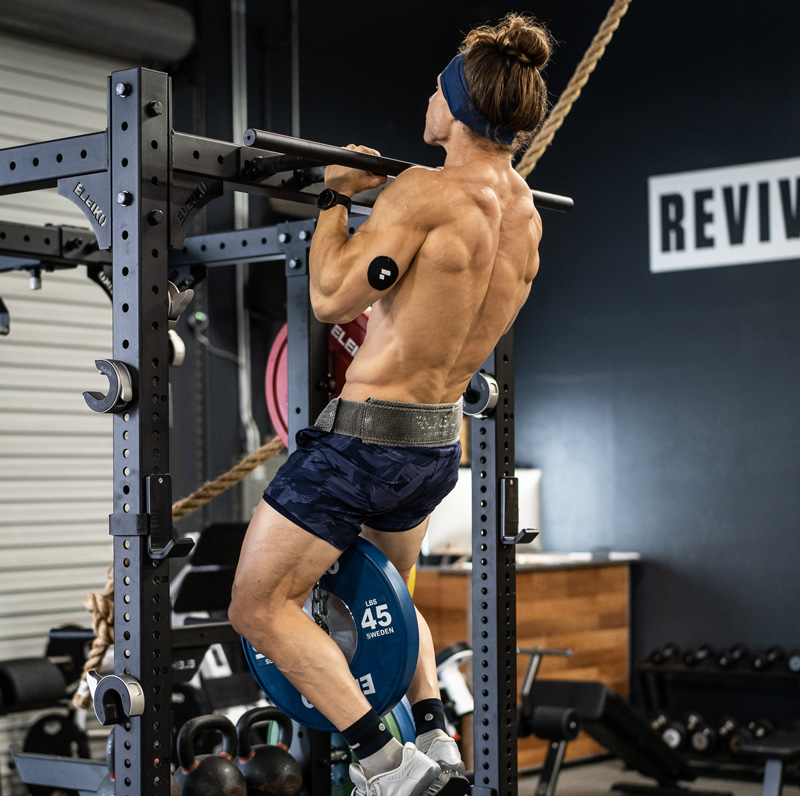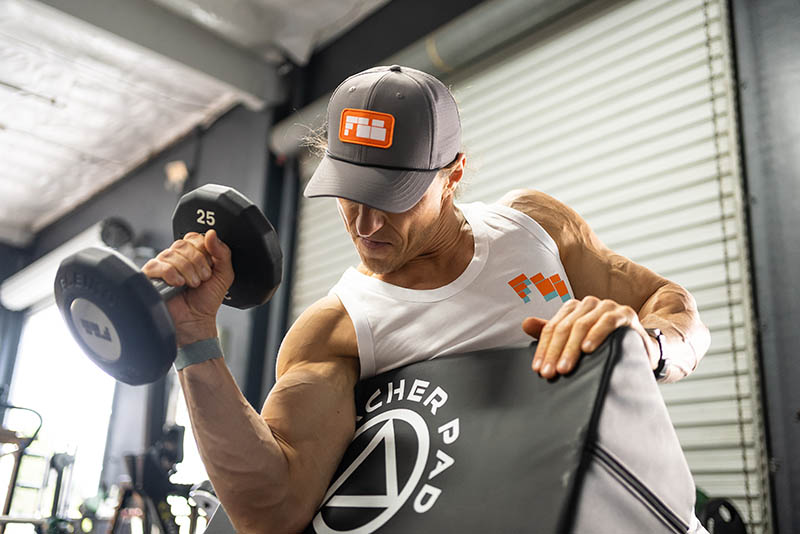Articles
WHICH TRAINING SPLIT IS RIGHT FOR YOU?
I just got back from a short trip to San Diego with friends - and luckily got to meet a few of you too at an event with Transparent Labs.
When I travel, it’s always fun to hit up some new gyms. And from time to time, a fellow gym-goer gives me the nod.
Sometimes, the nod is followed by the question: “Hey man, what’s your split?”
This question is usually code for a few questions in one - you might wonder about some of these too:

- What’s a good routine to build visible muscle?
- How can I get the most out of the actual time I have to spend in the gym?
And sometimes, it’s some version of, “How can I train effectively without feeling so beat up and sore I start to hate my life?”
I have exciting news for those who want to train less and still cover all your bases - Persist is adding 3x week, full body splits in January! More on that in a moment.
But first, what is a training split exactly? And how do you know which one is best for you? Let’s break it down so you can choose a routine that works for you - not somebody else.
What's a training split?
Training Splits are how your workout schedule splits up all the different areas of your body you want to train, across the time you have each week.
If your workout program has Lower Body sessions on Monday and Friday and Upper Body sessions on Wednesday and Saturday, you’re doing an Upper/Lower split.
A few common splits you may hear about:
- Body Part Splits (AKA Bro Splits)
- Upper/Lower
- Push/Pull/Legs
- Full Body Splits

Is there one best training split that is out there in the world? Well, depending on who you follow you might get fed a bunch of reasons why their training split is superior to others.
The reality is that there is someone out there who has had success in all of these training programs. Meanwhile, there are also people not having success with each of these training programs.
More often than not, the key to success is just a combination of consistency and adequate intensity. Work hard enough and long enough and just about any of these program variants can help you achieve success.
But there can be good reasons to choose different splits and they depend on the answers to a few questions. Depending on several variables, there may be one style of training split that is better for you than others.

Here are some things to consider:
- Your Training Experience. Beginners require less volume and intensity in their training programs—but often greater frequency—than advanced lifters.
- Your Goals. Do you want to be generally fit, or build the maximum amount of muscle humanly possible?
- Your Schedule. How many days can you realistically train?
- Your Rest and Recovery Needs... this is often correlated to your training experience, However, your unique stress tolerance and adaptability can impact this. This can also change throughout your life as you age and take on more stress in other forms.
Training Splits can be broken into 3 main categories.
- Body Part Splits
- Regional Splits (Upper/Lower, Push/Pull/Legs, Squat+Pull/Hinge+Push)
- Full Body Splits
Here are the pros and cons of each:
Body Part Splits - In the traditional version, every body part gets one day of training per week.
While this style has been around for a long time, it has fallen out of fashion with the evidence-based fitness community. Research has shown that more frequent training of muscle groups yields superior results in the way of strength and hypertrophy.
Most people recover much faster than once every 7 days, so by training each part less than that you’re leaving gains on the table. And for general fitness or muscle growth, you could do better unless you just really enjoy this style.
Outside of just wanting to mix things up for fun, I don’t see any value here for our audience. For this reason we don’t include these splits in PERSIST.
Regional Splits - Instead of individual parts, this split focuses on regions of the body. On an upper body today you might do pushing and pull exercises. This would train your chest, shoulders, triceps, back, and biceps. Depending on the particular movements that are selected, there might be more shoulder or lat bias some days, while another day would bias the chest and traps. But the idea is to target large patterns of movement that involve more muscles than just one. These are the types of training splits that we have historically used the most in PERSIST.
regional splits
A few example regional splits that have shown up in Persist:
Example 1
- Mon - Upper Body Horizontal Push and Pull
- Tues - Lower Body Squat Dominant
- Wed - Shoulders and Arms and Core
- Thur - Active Recovery
- Fri - Upper Body Vertical Push and Pull
- Sat - Lower Body Hinge Dominant
- Sun - Full Rest
Example 2
- Mon - Upper Body Push and Pull
- Tues - Lower Body
- Wed - Shoulders and Arms and Core
- Thur - Active Recovery
- Fri - Upper Push/Lower Squat - Full Body Push
- Sat - Upper Pull/Lower Hinge - Full Body Pull
- Sun - Full Rest
Example 3
- Mon - Upper Body Push
- Tues - Lower Body
- Wed - Upper Body Pull
- Thur - Active Recovery
- Fri - Upper Push/Lower Squat - Full Body Push
- Sat - Upper Pull/Lower Hinge - Full Body Pull
- Sun - Full Rest
PROS
CONS
Training global movement patterns is very efficient, and allows you to pack a lot of hard work into a shorter period.
When training 4-5x per week, a regional split hits each body part 2-3x per week, which is highly supportive of the research on optimal frequency per body part.
There is a lot of variability in Regional Splits (PPL, Upper/Lower, Squat/Pull, Hinge/Push). Compared to traditional Body Part Splits, you can have way more variety to your training and you can easily adapt every 6-12 weeks to create new looks at training that keep you engaged.
Since you will see body parts and movement multiple times in a week, you won’t have to train as many sets per day as you would with a Body Part Split. This means more intensity on fewer exercises and better results.
If you have a limited number of days to train per week, as in only 2-3 days, then this sort of split might not give each body part enough frequency to get the most bang for your buck.

Full body splits
In this approach, each day the goal is to cover the full body. Generally, this means you include an upper-body push exercise, an upper-body pull exercise, and a lower-body movement. In doing so you cover just about all the muscles of the body on a given day. If you wanted to get even more specific, you would generally try to touch one of each of the following.
- Upper Body Push
- Upper Body Pull
- Lower Body Squat
- Lower Body Hinge
- Arm/Core/Calves
FULL BODY AHEAD in Persist!

In January we are releasing two Full Body Programs in Persist. One is based on PUMP LIFT, and the other on PUMP CONDITION.
You can do these 3x per week, or make your own schedule since you hit full body every time. This has been a much-requested addition to Persist, and we’re very excited to bring this to the program beginning January 1.
PROS
Because you are only training each movement pattern or body part once in a given session, you can bring a great amount of intensity to each set. You won’t fatigue any body part so much that your intensity drops off.
If you are training less often due to time constraints in your schedule and life, then a Full Body Split can be ideal. If you only have 2-3 days a week to train then Full Body allows you to hit each body part frequently enough for optimal results.
If you are training Full Body and you have a body part that isn’t feeling good on a given day, it is easy enough to swap out a movement without interfering with something else. If the Bench Press doesn’t feel good, then choose another push exercise for that day that does. Something like a seated DB Press.
CONS
In trying to cover the full body all in one day, it can be time-consuming to add enough sets of every exercise without going too long.You won’t be able to do 5-6 sets of every exercise and keep your training time under 60-75mins. Some people respond better to doing more sets in a given session for the body parts being trained.

More Options = More Consistency
Over the years, I’ve considered the pros and cons of different training splits. The truth is that if you train a lot and are in the gym 4-6 days per week, you have a lot of variability in what Training Split to choose from. You can have success on several.
For our 4 and 5x/week programs, we have opted for Regional Splits mainly since these afford us the most variability and make sense for the widest range of athletes.
As for the introduction of a 3x/week training option in PERSIST, the choice was clear. Full Body Splits make the most sense with less frequent training. I’m excited to showcase this in the coming weeks and help you all get the most out of your training in less time with Full Body PUMP workouts.
Remember, you don’t have to get married to one training split forever either. Use Full Body when your schedule is hectic and you need to stack easy wins. And use Regional Splits when you’re feeling more motivated and dialed in, and ready to take on more. Your training split of choice is just another tool that Thinking Athletes can use to make the most of their time, both in and out of the gym.
Learn More About Persist
